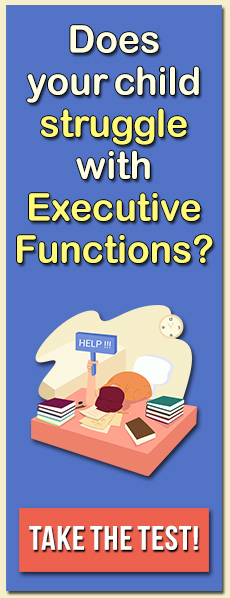Executive functioning skills and technological abilities play a larger role in remote learning than they do in the traditional classroom. As a result, remote learning has turned out to be a great challenge for many students, as well as their parents and teachers. Kids who have previously done well in traditional school settings have found themselves struggling in virtual schools. At times, this is a result of inadequate, unstructured, or ineffectively modified teaching. But even as the teachers have made improvements in how they present and organize material for online learning, many students are still finding themselves falling behind and, more importantly, not learning. I would argue that these students have not mastered all of the skills necessary to succeed in remote learning. Basic skills required include an understanding of the technology that is being used, the capacity to pay attention, and effective executive functioning skills. Without these skills, they can barely figure out what to do, how to get started on tasks, and how to keep track of what they are expected to complete.
It would be easy to say that the core problems of remote learning result from poor access to technology or a lack of knowledge about how to use it. Undoubtedly, technology literacy is necessary to engage in remote learning. Kids, and their parents, need to know much more than how to access Zoom or Google classroom. Kids can’t go to school if they can’t find it. And while these concerns explain a modest part of the variance, it appears that the kids who are struggling most with remote learning are those who cannot independently manage their attention, time, and effort required to succeed with remote learning.
Some of the kids having the most difficulty with remote learning are those in elementary school with underdeveloped executive functioning skills. In a traditional elementary school classroom, teachers are better attuned to kids who seem confused about what to do or how to start an assignment. These teachers know which students need a little extra push to pay attention or to finish a task because they can observe their students directly. In remote learning, often the first signal that the elementary school child is struggling is when they don’t turn in their assignments or their work indicates that they never understood the material or the instructions.
Older kids who are new to remote learning may also struggle with executive functioning demands. Teachers expect more from them and often cannot provide the structure and feedback of a typical classroom with remote learning. These kids need to learn to self-advocate, ask questions, and recognize when they are falling behind. This group of struggling students are not just those diagnosed with ADHD or who previously needed extra support in the brick and mortar classroom. It’s many of the kids who didn’t like school pre-Covid, who needed repeated reminders to do their homework, who don’t do their chores without parental oversight, and whose room and possessions are always in disarray. Here are 3 skills that all students need to succeed in remote learning:
Technology skills to navigate in the virtual classroom.
Kids and their parents need to be well-informed about navigating Google classroom, Zoom, or whatever platform is being used for remote learning in their school district. It’s not enough to simply join the virtual classroom at the beginning of the school day and sign off at the end of the day! They should know basics such as how to communicate with teachers, where homework and assignments are listed, and strategies to get and find teacher feedback. Students also need to know how to access external resources, how to return completed work to teachers, and become familiar with various features of the platform being used that are designed to help with organizing work, understanding deadlines, and communicating with peers.
Task initiation skills.
Learning to get started is often the most difficult thing when students are working independently in their homes. Think about what it is like to get your child to do their homework and then multiply it by about six (for the roughly six hours in the school day). Fortunately, many teachers have made their classes more structured, with clear expectations for class attendance, models for work completion, and more live interaction that helps students with task initiation. Nonetheless, when a task is boring or uninteresting, students may need even more assistance. Strategies such as pairing students up with peers who are self initiators, doing group projects, setting time limits, giving immediate feedback, and maintaining a child’s energy (with snacks and movement breaks) during school hours can also be helpful.
Task persistence or grit.
Students who have a history of difficulties with motivating themselves to get their homework done on their own will find remote learning to be an even greater challenge. There is less feedback and supervision because teachers are not there to observe them or provide encouragement. As a result, students who are most likely to succeed in remote learning have internalized grit and task persistence. Because students are not directly observing others in the classroom, remote learning does not provide an opportunity to model the effort or their peers or to be embarrassed by one’s own lack of achievement. Teachers can help with task persistence by breaking tasks into smaller sections, providing immediate feedback on performance, and structuring time expectations. Direct training in improving grit is a more challenging proposition, but research directs teachers to build academic mindsets and help students develop learning strategies. Remote learning is not the best environment for teacher-initiated modeling, feedback, and confidence-building that can enhance grit and growth mindsets. However, remote learning may provide a unique opportunity for students to identify a sense of personal agency and independence that connects their own effort with an improvement in their skills.
What are the challenges your child is facing with remote learning? Share your thoughts in the comments below!


